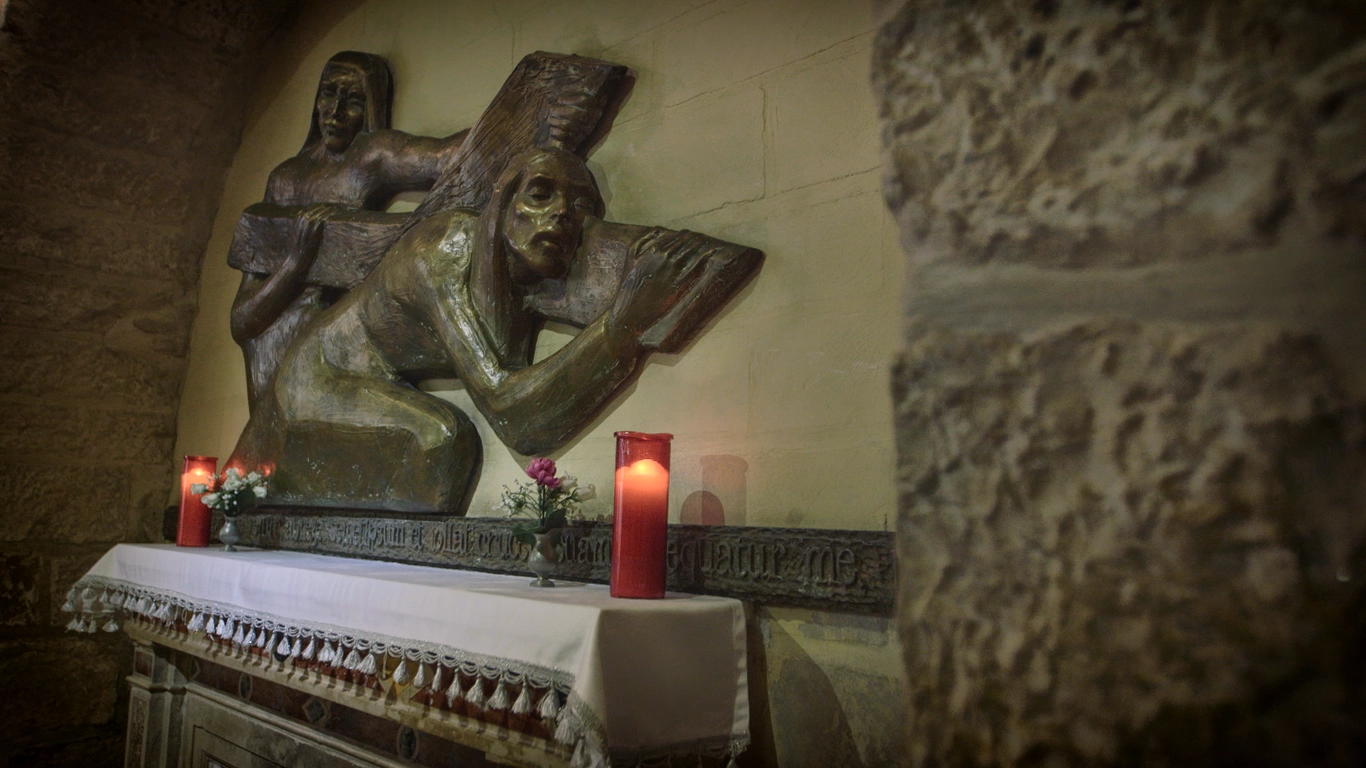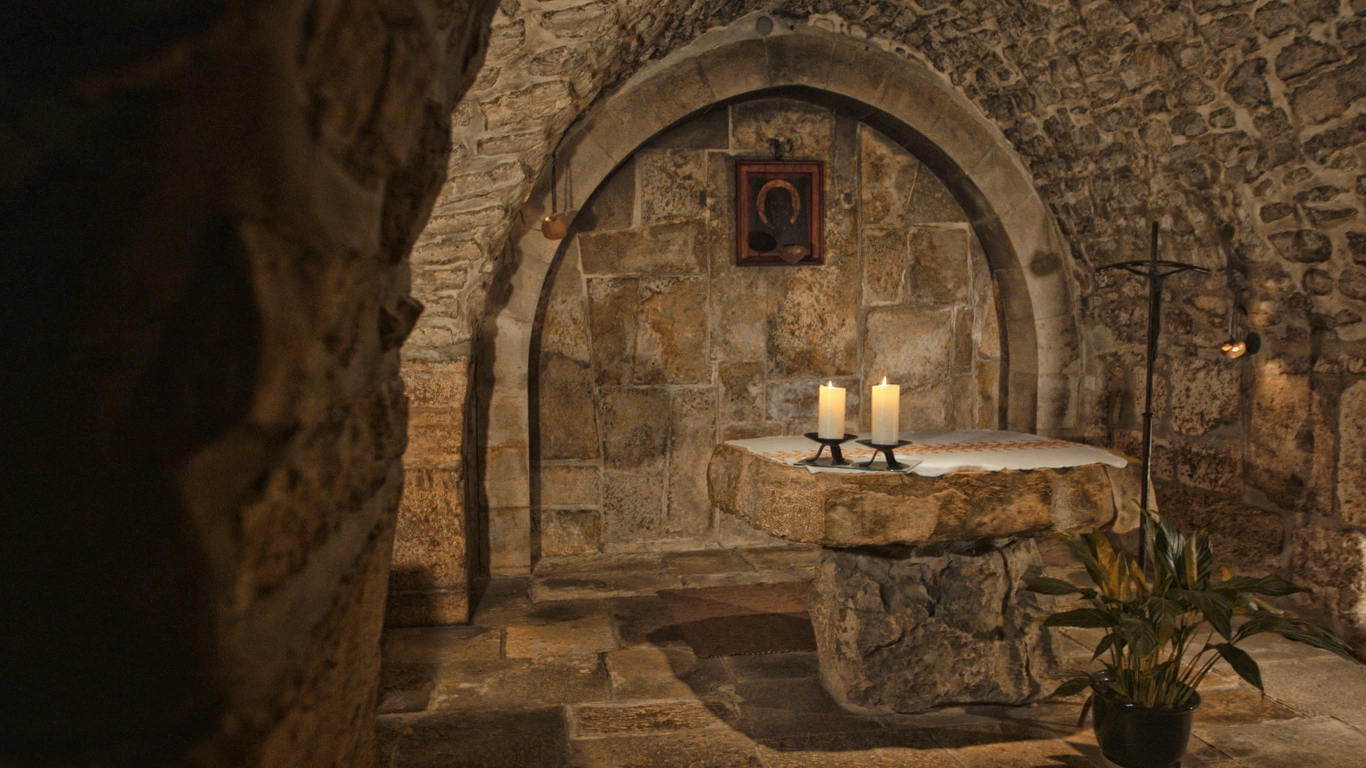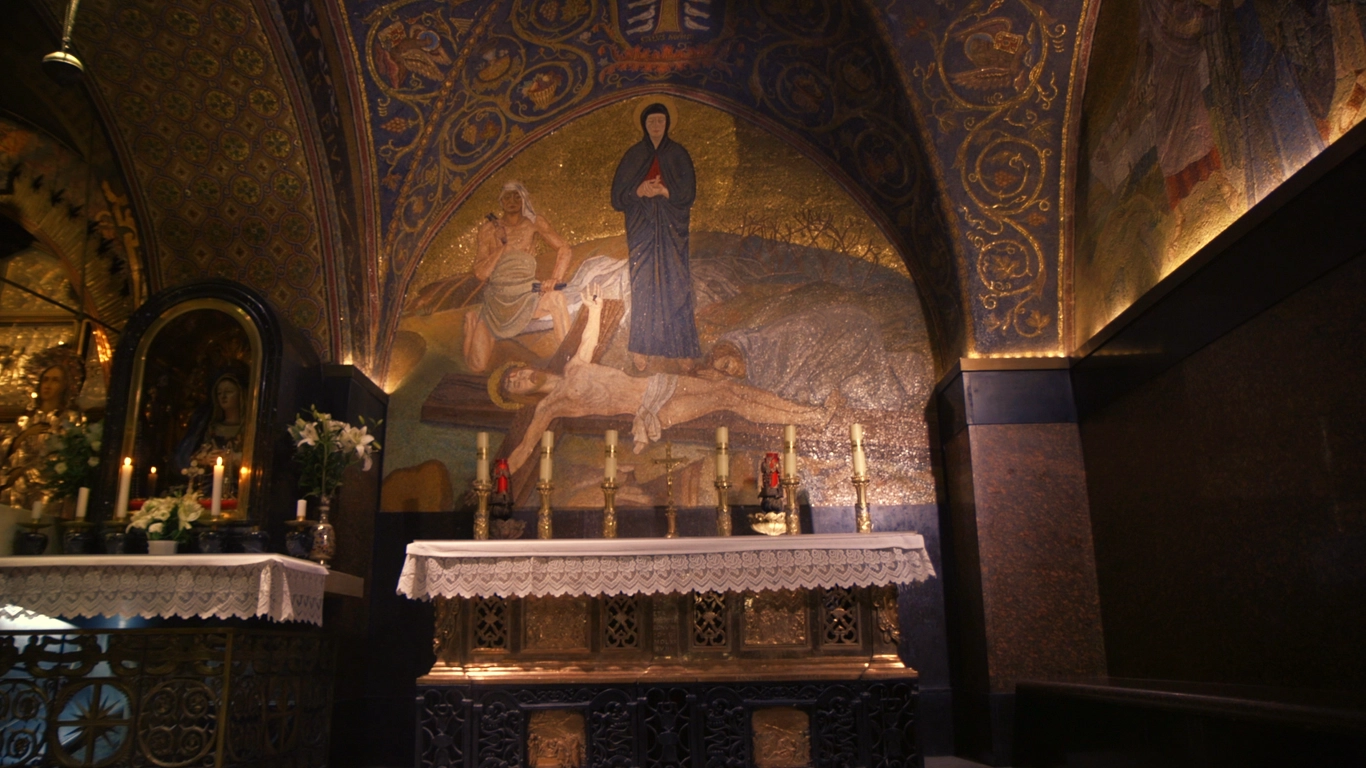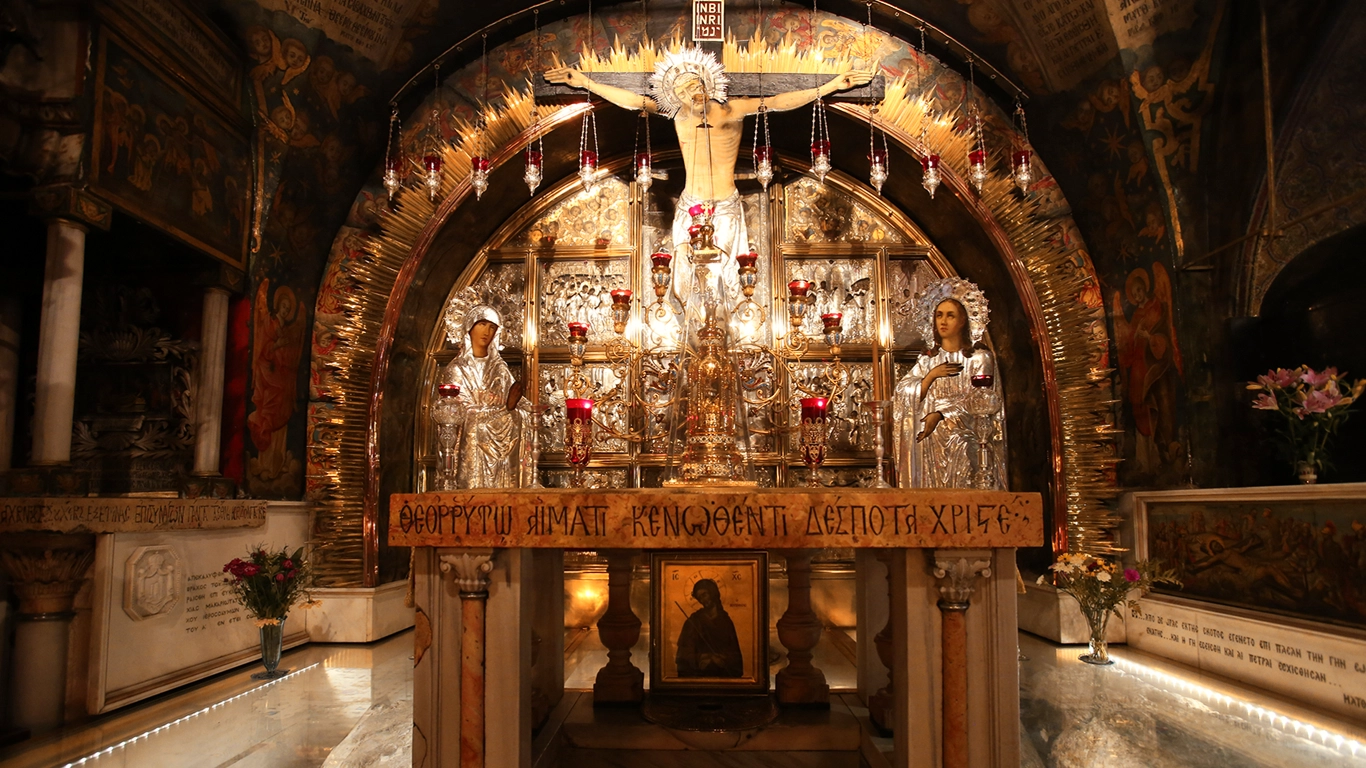Jesus is condemned to be crucified. The Greek Orthodox pilgrims begin their course at the Monastery of the Praetorion while the Latin Christians at the yard of Omar’s College.

Jesus takes up his Cross.


Jesus meets his mother. An engraved representation of this meeting is depicted over the entrance of this Armenian chapel.

Simon the Cyrene’s house. The house of the man who was enforced to carry Christ’s Cross. According to the tradition, Christ’s palm is imprinted on one stone He touched on the wall as He fell under the weight of the Cross.

Saint Veronica’s house. In that place Saint Veronica wiped Christ’s sweaty, bleeding face and His divine sight was imprinted on the cloth (known as Sacred Mandylion).

The Gate of Condemnation – Latin chapel. This gate stands probably over ancient ruins of the wall of Jerusalem. Christ fell for the second time under the weight of the Cross here.

Christ offers consolation to the young maidens of Jerusalem. “But Jesus turning unto them said, Daughters of Jerusalem, weep not for me, but weep for yourselves, and for your children. For, behold, the days are coming, in which they shall say, Blessed are the barren, and the wombs that never bare, and the breasts which never gave suck” (Luke 23:28-29).

The third fall of Christ. According to the medieval tradition it happened near the entrance of the Church of the Resurrection.

East side of the Temple yard – Armenian-Syrian chapel. Jesus is denuded in order to begin the process of His Crucifixion and death.

Golgotha – Latin chapel. Jesus is placed on the Cross.

Golgotha – Greek Orthodox chapel. The site of Christ’s Crucifixion and death.


The Holy Sepulchre. Joseph and Nicodemus buried Jesus in Joseph’s unused tomb, which was carved in the rock and was located at a short distance from the Crucifixion site.
